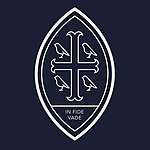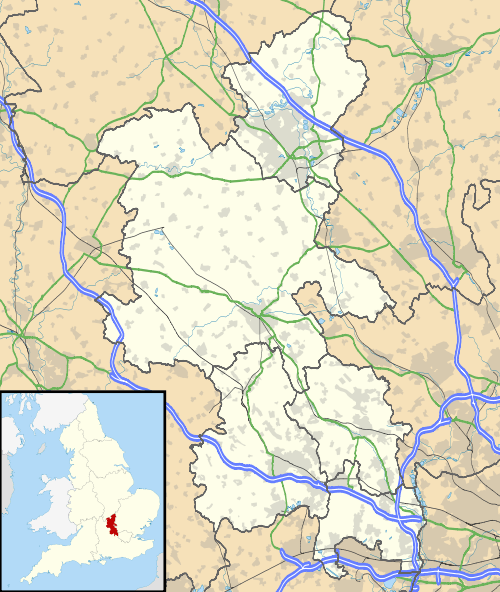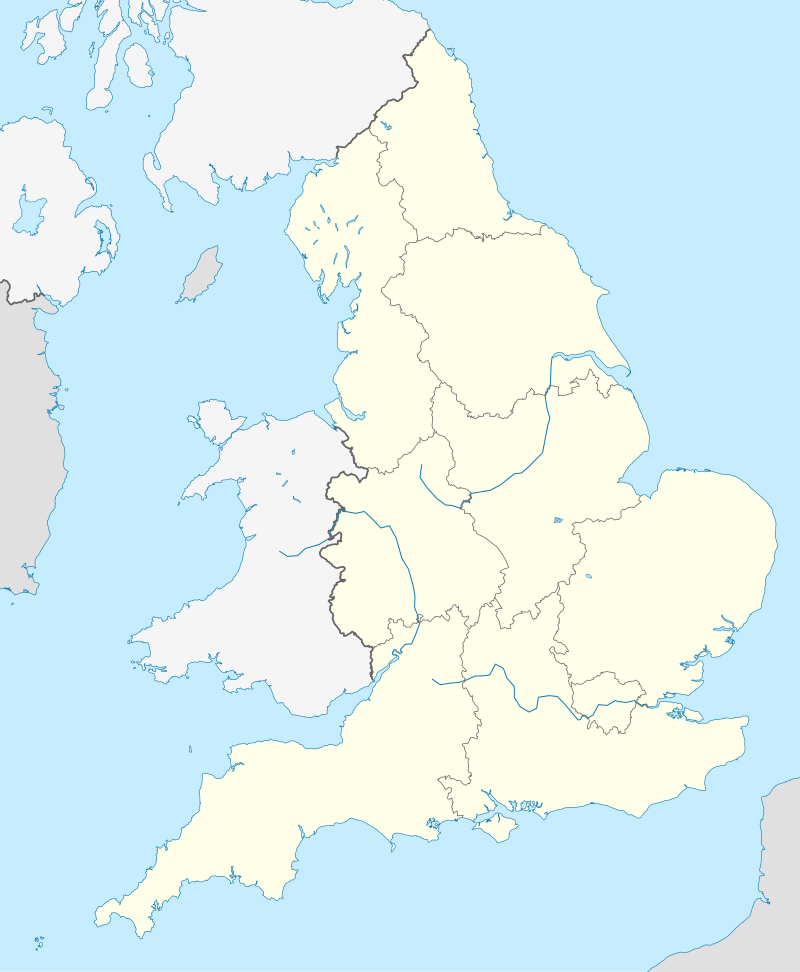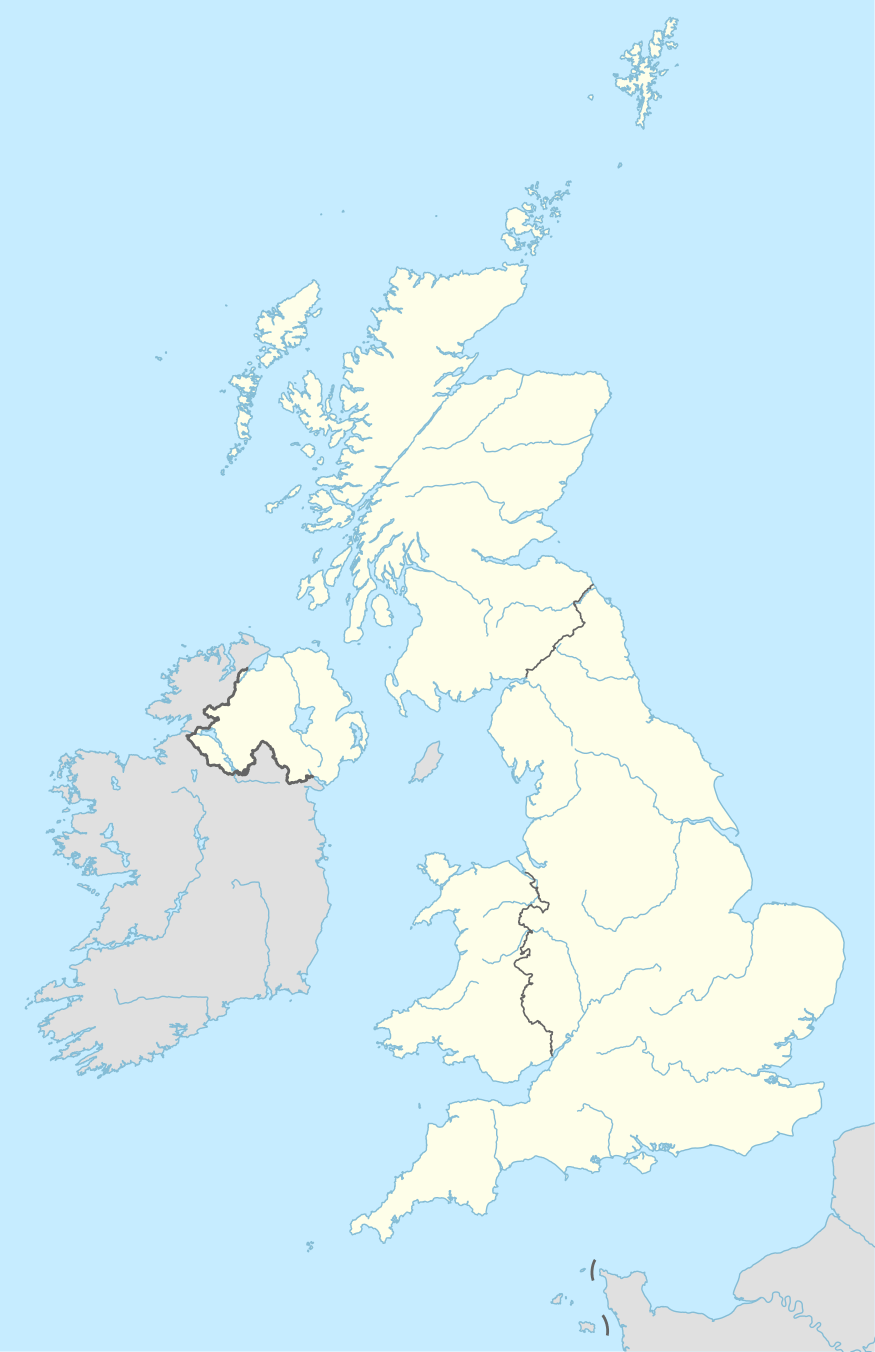Wycombe Abbey
Wycombe Abbey is an independent girls' boarding and day school in High Wycombe, Buckinghamshire, England. Consistently ranked as the top all-girls school nationally in academic results,[3][4] the school was founded in 1896 by Dame Frances Dove, who was previously headmistress of St Leonards School in Scotland. Its present capacity is approximately 615 girls, aged 11 to 18.[5] The school is situated on a 170 acres (69 ha) campus in central High Wycombe.
| Wycombe Abbey School | |
|---|---|
 | |
| Location | |
 Wycombe Abbey School  Wycombe Abbey School  Wycombe Abbey School | |
| , , HP11 1PE | |
| Coordinates | 51°37′33″N 0°45′04″W |
| Information | |
| Type | Independent boarding school |
| Motto | Latin: In fide vade Go in faith |
| Religious affiliation(s) | Church of England |
| Established | 1896 |
| Founder | Dame Frances Dove DBE |
| Department for Education URN | 110547 Tables |
| President | Maj The Rt Hon Peter, Lord Carrington KG GCMG CH MC PC DL |
| Chairman of The Council | Patrick Sherrington |
| Headmistress | Mrs J. Duncan MA [St Andrews), PGCE (Cantab) |
| Staff | 117 Teaching 167 Support[1] |
| Gender | female |
| Age | 11 to 18[2] |
| Enrolment | 589[2] |
| Capacity | 615[2] |
| Houses | 11 |
| Colour(s) | |
| Website | http://www.wycombeabbey.com/ |
The land includes woods, gardens, a Cold War bunker (RAF Daws Hill) and a lake, and rises up to 500 feet (150 m) above sea level in the Chiltern Hills. The freehold is owned by the school; the main house and several buildings at Wycombe Abbey are Grade II* listed. The current headmistress is Jo Duncan.
History
Early history
The history of the building predates the school's acquisition of it. In the thirteenth century, the area, with the parish church, was part of the holding of the Abbess of Godstow. 600 years later, the priory at Godstowe was also re-founded as a school by Dame Frances Dove, and today is a 'feeder' preparatory school for Wycombe Abbey.
On the site of the present Wycombe Abbey was a large manor house known as 'Loakes House' which was the seat of the Archdale family, until 1700, when Thomas Archdale sold it to Henry Petty, 1st Earl of Shelburne. The earl in turn bequeathed the estate to his grandnephew, William Petty, (who inherited a different Earldom of Shelburne in 1761[6] and became Prime Minister in 1782). The Shelburnes, though, had a far larger and grander residence at Bowood House in the Savernake Forest and spent little time at Loakes House.
Consequently, Lord Shelburne sold his estates in the area. Loakes House was purchased from them at auction by Robert Smith, 1st Baron Carrington, in 1798. He employed the architect James Wyatt to transform Loakes House into Wycombe Abbey as we see it today. The original house and other parts of the school are listed Grade II* on the National Heritage List for England with the landscaped grounds of the school listed Grade II on the Register of Historic Parks and Gardens.[7][8]
The 'new' Wycombe Abbey
As an architect, James Wyatt captured the romantic spirit of his era, creating a Gothic ecclesiastical style. While building Wycombe, he was also engaged in the building of the greatest Gothic extravaganza of the age, Fonthill Abbey, a mansion that was a replica of a medieval cathedral complete with soaring tower. It was supposed to resemble the fictitious Castle of Otranto. Fonthill is now demolished which leaves Wycombe Abbey as one of the most important examples of this type of architecture remaining.
While a far less ambitious project than Fonthill, Wycombe Abbey is a jewel of the romantic Gothic style. The castellated, three-storey central block has turrets on each corner and is seven bays wide, with sash windows. On the ground floor, they are ogee-topped in the ecclesiastical manner. There is a slightly incongruous oriel window in the centre of the second floor. Attached, by a two-floored wing, is a chapel-like block clearly indicating the architect's intention to emulate an abbey; this wing is completed by statues in niches on the external wall in the medieval manner.
The whole composition is an echo of the house's larger sister at Fonthill. Like Fonthill Abbey, the whole structure was intended to imitate one of the older country houses genuinely converted from an old abbey or monastery. The final stage of the transformation was the renaming of Loakes House to Wycombe Abbey.
World War II
The Air Ministry requisitioned Wycombe Abbey School in March 1942 to serve as the headquarters of the United States Eighth Air Force after the entry of the United States into World War II. It was returned to Wycombe Abbey on 9 May 1946.[9]
Houses
As at most independent schools, the pupils are placed in houses. The houses at Wycombe Abbey are: Airlie, Barry, Butler, Campbell, Cloister, Pitt, Rubens, Shelburne and Wendover. Girls in UVI live in Clarence, while the junior-most girls, UIIIs, live in Junior House. Every house at Wycombe Abbey is linked to a colour and, as part of the school uniform, girls wear ties which correspond to their House colour i.e., sky blue – Barry, green – Cloister, brown – Airlie, pink – Rubens, yellow – Pitt, orange – Butler, purple – Campbell, dark blue – Shelburne, red – Wendover, lavender – Junior. Each girl has her own 'House Mother', a girl in the year above in the same house who looks after her, particularly when new to the school. Each house has a housemistress and matrons.
Notable alumnae (Wycombe Abbey Seniors)
- Eve Best, actress
- Elsie Bowerman, suffragette, Titanic survivor and lawyer
- Kate Brooke, screenwriter
- Elizabeth Butler-Sloss, British judge, Deputy Coroner of the Queen's Household[10]
- Sue Carr, Justice of the High Court
- Judith Chaplin, Member of Parliament (1992)
- Lorraine Copeland, archeologist
- Gabrielle Drake, actress
- Penelope Fitzgerald, novelist and biographer[10]
- Jackie Forster, actress, TV personality, feminist and lesbian campaigner
- Elizabeth Haysom, orchestrated the double murder of her parents
- Molly Hide, English cricketer
- Elspeth Howe, Baroness Howe of Idlicote[10]
- India Knight, journalist
- Dorothy Lamb, archaeologist
- Beverley Lang, Justice of the High Court
- Fiona MacCarthy, biographer and cultural historian
- Charlotte Moore, BBC's Director of Content
- Florence Nagle, trainer and breeder of racehorses, breeder of pedigree dogs, feminist
- Melanie Nakhla, soprano 2 in classical crossover group All Angels
- Winifred Peck (née Knox), English author
- Sally Phillips, actress[10]
- Joan Riviere, psychoanalyst
- Merryn Somerset Webb, editor in chief for MoneyWeek[11]
- Sarah Springman, CBE FREng, engineer and sportswoman, rector of ETH Zurich
- Polly Stenham, playwright
- Rachael Stirling, actress[10]
- Lady “Red Jessie” Street, Australian suffragette, social reformer and founding United Nations envoy
- Florence Temko, origami pioneer and author
- Mary Wakefield, journalist
- Sonya Walger, actress
- Lady Charlotte Wellesley, socialite and producer
- Kathy Wilkes, philosopher
- Lady Nicholas Windsor, wife of Lord Nicholas Windsor
- Morenike Williams, producer
Notable staff
- Dame Mary Cartwright
- Gustav Holst
- Sue Jenkins
- Annie Whitelaw, Head from 1910-1925[12]
- Elsie Bowerman, governor and school historian
References
- "Staff List". wycombeabbey.com. Retrieved 12 December 2016.
- "Wycombe Abbey School". Edubase. HM Government. Retrieved 12 December 2016.
- Griffiths, Sian (21 July 2013). "The richest pickings". The Sunday Times.
- "Schools Guide 2016: Wycombe Abbey". Tatler.
- "School census data". Edubase. Departement for Education. Retrieved 17 April 2013.
- Henry Petty was created Earl of Shelburne in 1719, but when he died without heirs in 1751, the earldom became extinct. It was recreated for his kinsman, John Petty in 1753; it was this latter earldom that William Petty inherited.
- Historic England, "Wycombe Abbey (parts of Wycombe Abbey School) (1310649)", National Heritage List for England, retrieved 22 August 2017
- Historic England, "Wycombe Abbey (1000609)", National Heritage List for England, retrieved 22 August 2017
- "History of the School". Retrieved 8 March 2016.
- "Wycombe Abbey". Archived from the original on 15 September 2012. Retrieved 1 January 2009.
- Somerset Webb, Merryn (11 December 2007). "Such a Waste, the 'Cupcake Revolution'". The Evening Standard. Archived from the original on 28 December 2013.
- "Whitelaw, Annie Watt (1875–1966), headmistress and educationist | Oxford Dictionary of National Biography". www.oxforddnb.com. doi:10.1093/ref:odnb/70074. Retrieved 16 January 2019.
Further reading
- Elsie Bowerman Stands there a School – Memories of Dame Frances Dove, D.B.E., Founder of Wycombe Abbey School (1965)
- Wycombe Abbey School 1896–1986: A partial history (1989; ISBN 0950383619)
External links
- Wycombe Abbey official website
- Profile on the ISC website